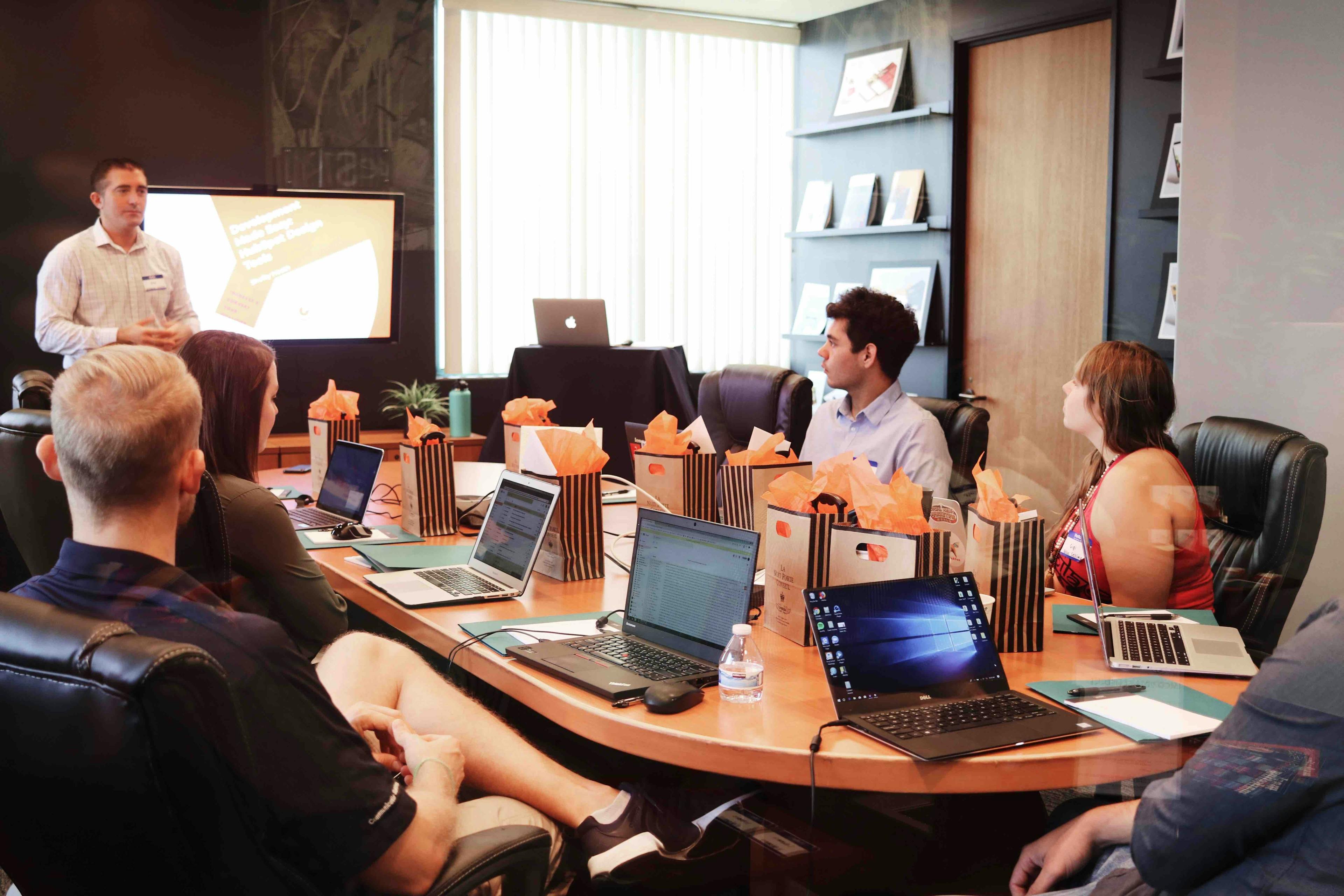Product Owner Responsibilities: Key Roles and Responsibilities in 2024
Published Feb 7, 2024
⦁
9 min read

Product Owner Responsibilities: Key Roles and Responsibilities in 2024
In the ever-evolving world of 2024, the role of a Product Owner has never been more integral to the success of a product. With rapid technological advancements and increasing customer expectations, Product Owners have to juggle numerous product owner responsibilities – from shaping the product vision to driving agile development and collaborating with cross-functional teams. Imagine being the conductor of an orchestral masterpiece, where every instrument represents a different aspect of the product development process. That’s the exciting, multi-faceted role of a Product Owner. Let’s delve deeper and discover the symphony of responsibilities that define this pivotal role.
Short Summary
Product Owners in 2024 will be responsible for delivering maximum value to customers, stakeholders and the software market.
Essential skills include strong communication & collaboration, analytical & problem solving abilities, adaptability and flexibility
The Product Owner role is distinct from Scrum Master & Project Manager roles. A successful career path requires domain expertise as well as certifications/experience in agile development methodologies.
The Role of a Product Owner in 2024

As the conductor of the development process, the agile product owner plays a crucial role in defining, prioritizing, and managing product features and requirements, identifying market opportunities, and understanding customer needs. The product owner’s responsibilities are not confined to one area of the business. Rather, they are engaged in facets of business strategy, product design, market evaluation, and project management. It’s like playing a game of chess on multiple boards simultaneously, where every move matters and contributes to the overall success of the product.
Ensuring the highest possible value of the product in accordance with customer expectations, the product vision, and business managers’ goals is the primary responsibility of a product owner in 2024. This involves:
Monitoring development progress
Exploring ways to optimize processes
Having a keen awareness of the dynamic software market
Proficiency in supervising development
Product Owners are the crucial link between the development teams, stakeholders, and the ever-changing market landscape.
Shaping the Product Vision
Imagine a sculptor, meticulously shaping a block of marble into a masterpiece. That’s what a Product Owner does when shaping the product vision. They formulate the product vision, ensuring it is consistent with business objectives, and convey it effectively to stakeholders and development teams. Understanding customer and stakeholder needs, and communicating them to pertinent stakeholders, is as essential as the sculptor understanding the properties of marble.
Moreover, comprehending customer requirements from a journey lifecycle perspective assists the Product Owner in recognizing long-term customer objectives, much like how a sculptor visualizes the final form of the sculpture when chiseling the marble.
Thus, shaping the product vision is not a one-time act, but a continuous process of understanding, aligning, and communicating customer needs and business objectives.
Driving Agile Development
As the steering wheel of the development process, the Product Owner drives agile development by managing the product backlog, prioritizing features, and ensuring the development team adheres to agile best practices. The product backlog serves as a prioritized list of requirements for future product development, with the Product Owner being the responsible manager. It’s akin to a ship’s captain charting the course, ensuring that the ship stays on track and reaches its destination.
In order to promote ongoing alignment, the scrum product owner must ensure that the product backlog is transparent, accessible, and available to all stakeholders. Additionally, the product owner typically collaborates with those knowledgeable of the customer’s needs, including members of the Scrum team. This ensures a shared understanding and a collective effort towards achieving the product vision.
Collaborating with Cross-Functional Teams
Imagine a sports team, where each player has a unique role, yet they all work together to win the game. That’s how a Product Owner collaborates with cross-functional teams, such as developers, designers, and business analysts, to ensure a unified approach to product development. The collaboration goes beyond just working together; it involves establishing a sprint goal with the developers during sprint planning and serving as a link between teams and stakeholders.
The Product Owner’s role doesn’t end with planning. During sprint review, the Product Owner proposes improvements to the product based on stakeholder feedback, defines a sprint goal, decides which backlog items to include in the sprint, and discusses the team’s plan for completing the chosen work. Therefore, a Product Owner should be present for sprint planning, sprint reviews, sprint retrospectives, and product backlog refinement, much like a team captain is present at every game, practice, and team meeting.
Core Responsibilities of a Product Owner

As the conductor of the development process, a Product Owner juggles multiple responsibilities. Their primary duties include defining user stories and acceptance criteria, prioritizing the product backlog, and ensuring ongoing enhancement of the development process. The Product Owner owns and defines the product roadmap, updates and prioritizes the product backlog in accordance with urgent and important needs, and ensures a clear development path is established. It’s like being the captain of a ship, navigating through a storm, making sure the ship stays on course and reaches its destination.
Business analysis assists Product Owners in making decisions about the product based on data and guarantees it is in line with business objectives. With their:
Analytical capabilities
Communication proficiency
Technical aptitude
Decision-making ability
Project management expertise
Collaborative aptitude
Conflict resolution capability
Focus
They ensure the product provides the most value to the business.
Defining User Stories and Acceptance Criteria

A picture may be worth a thousand words, but in the world of product development, a well-defined user story can be worth a thousand lines of code. Product Owners create user stories and acceptance criteria to clearly communicate customer needs and requirements to the development team. User stories are artifacts crafted by Product Owners to communicate customer requirements to the development team, similar to how a screenwriter crafts a script for a movie.
Maintaining the product backlog, where these user stories reside, is not a one-time event, but a continuous process. The product backlog list must be kept up-to-date on a regular basis, much like updating the script based on the changes in the storyline or characters.
Prioritizing the Product Backlog
Just as a conductor decides which musical piece to play first in a concert, a Product Owner prioritizes the product backlog based on customer needs, business value, and resource constraints, ensuring the most important features are developed first. Collaborating with the Scrum Team, they prioritize requirements in accordance with scope, timeline, and budget constraints, evaluating each priority against the objectives and needs of stakeholders.
The product backlog should be prioritized according to the urgency and criticality of the requirements, much like a triage nurse prioritizes patients based on the severity of their condition. This ensures that the development team focuses on the most critical features, driving maximum value for the business.
Ensuring Continuous Improvement
In the rapidly evolving world of 2024, standing still is falling behind. Therefore, Product Owners are accountable for guaranteeing continuous improvement through regular assessment of progress, collecting feedback, and modifying the product backlog as necessary. This is akin to an athlete continually training, reviewing their performance, and adjusting their techniques to improve.
Collecting feedback at each iteration and adjusting the product backlog accordingly is an essential part of this process. Just like a chef tasting the dish while cooking and adjusting the ingredients based on the taste. To facilitate this, access to the product backlog should be granted to all stakeholders, promoting transparency and collaboration.
Essential Skills for a Successful Product Owner

Being a successful Product Owner is more than just understanding the roles and responsibilities; it’s about mastering a unique set of skills. Strong communication and collaboration, analytical and problem-solving abilities, and adaptability and flexibility are essential skills for a successful Product Owner. It’s like being a multitalented artist who can paint, sculpt, and create music.
These skills enable Product Owners to:
Effectively collaborate with stakeholders, development teams, and other cross-functional team members
Make informed decisions, detect potential issues, and devise solutions to difficulties
Effectively respond to changing customer needs, market conditions, and development challenges
Strong Communication and Collaboration
Imagine a symphony orchestra where each musician plays their part without any communication – the result would be chaos. Similarly, a Product Owner needs excellent communication and collaboration skills to orchestrate the product development process. They need to effectively collaborate with stakeholders, development teams, and other cross-functional team members, ensuring everyone is on the same page.
Effective communication with stakeholders ensures agreement on major decisions and strategies, while providing clear instructions and deliverables to developers. It’s like a coach clearly communicating the game plan to the team and ensuring that everyone understands their role. Thus, communication is a vital skill for any individual working on an Agile team, especially for a Product Owner, who has to adapt to different teams and personalities while understanding and achieving the product’s goal.
Analytical and Problem-Solving Abilities
Being a Product Owner is like being a detective – it requires strong analytical and problem-solving abilities. The ability to analyze data and make informed decisions, detect potential issues, and devise solutions to difficulties is a key trait of a successful Product Owner.
This role involves:
Collaborating with the Scrum Team to ensure the product’s quality
Managing and prioritizing the product backlog
Translating product managers’ strategies to development tasks
Understanding the customers’ and market’s requirements
Like a detective solving a mystery, a Product Owner uses their analytical skills to navigate through the complexities of the development process and ensure the product’s success.
Adaptability and Flexibility
In a world where change is the only constant, adaptability and flexibility are crucial traits for a Product Owner. Like a chameleon that changes its color based on its surroundings, a Product Owner must have the capacity to be flexible and decisive when making decisions and organizing tasks.
Adaptability and flexibility enable the Product Owner to respond effectively to changing customer needs, market conditions, and development challenges. It’s like a surfer riding the waves, adjusting their movements based on the size and speed of the wave, ensuring they stay on the board and enjoy the ride.
The Relationship between Product Owner, Scrum Master, and Project Manager

In the grand orchestra of product development, the roles of the Product Owner, Scrum Master, and Project Manager are distinct.
The Product Owner is responsible for product vision and backlog management.
The Scrum Master ensures agile best practices are being followed.
The Project Manager oversees overall project progress.
It’s like a symphony with the Product Owner as the composer, the Scrum Master as the conductor, and the Project Manager as the director, each playing their part to create a harmonious melody.
While domain expertise is a key requirement for a Product Owner, the Scrum Master facilitates the Agile development team by communicating modifications to the pertinent personnel. Meanwhile, the Product Owner supervises the product backlog and guarantees that the product provides the most value to the business. The sole distinction between a Product Owner and a Product Manager is that product management is one of the numerous roles a Product Owner is tasked with fulfilling.
Building a Successful Product Owner Career Path

Forging a successful Product Owner career path is like climbing a mountain – it requires preparation, skills, and perseverance. Here are some crucial steps towards reaching the summit:
Gain domain expertise
Develop strong communication and analytical skills
Obtain relevant certifications and experience in agile development methodologies
By following these steps, you can pave the way for a successful career as a Product Owner.
Having the right qualifications and experience is just the beginning. The journey also involves continuously improving and honing your skills, staying updated with the latest industry trends, and being adaptable to changing market conditions. Like a mountaineer who prepares for different weather conditions, terrains, and altitudes, a successful Product Owner is always ready for new challenges and opportunities.
Summary
In the dynamic landscape of 2024, the role of a Product Owner has evolved to become more complex and multifaceted. From shaping the product vision and driving agile development to collaborating with cross-functional teams and continuously improving the development process, Product Owners play a key role in the success of a product. By mastering essential skills such as strong communication and collaboration, analytical and problem-solving abilities, and adaptability and flexibility, they can effectively navigate the challenges and opportunities of the product development process. As the conductor of the development symphony, the Product Owner orchestrates a harmony of success, delivering high-quality products that provide maximum value to the business.
Frequently Asked Questions
What is the responsibility of a Product Owner?
The primary responsibility of a Product Owner is to ensure effective communication between stakeholders, product managers and development teams. They need to be able to manage the product backlog, translate product strategies into actionable tasks, and stay informed about customer and market requirements.
What are the responsibilities of a Product Owner in project management?
As an essential part of any Agile project team, the Product Owner’s responsibilities include maximizing product value, representing stakeholders, prioritizing the backlog, empowering the team, maintaining Agile and Scrum processes, and defining the product vision.
The Product Owner is responsible for ensuring that the product is built to the highest standards and meets the needs of the stakeholders. They must be able to effectively communicate the product vision to the team and ensure that the team is working towards the same goal. They must also be able to prioritize the backlog and ensure that the most important items are the most important.
Ready to improve your team's planning?
Put what you've learned into practice! Make your next planning session more engaging and accurate.
Try for free - no signup required